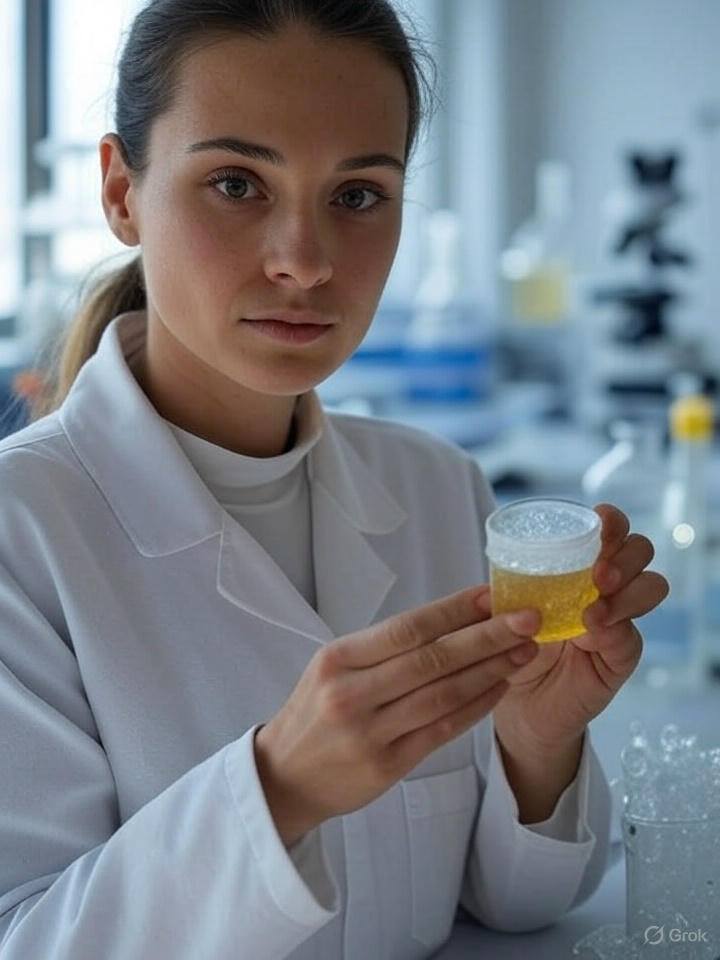DentistryUnited | Clinical Innovations | June 2025
In an era where sustainability intersects with precision medicine, a pioneering study published in Nature Communications has unveiled a game-changing development for the dental and maxillofacial community. Scientists at the University of California, Irvine, in collaboration with U.S. and Japanese institutions, have created a novel method to biomanufacture hydroxyapatite (HA) from human urine—a breakthrough that could significantly lower costs and enhance access to biocompatible graft materials for craniofacial reconstruction and implant dentistry.
From Waste to Worth: The Science of Osteoyeast
The process leverages a genetically engineered strain of Saccharomyces boulardii—termed “osteoyeast”—to metabolize urine. The yeast mimics mammalian osteoblast-like behavior, breaking down urea, raising environmental pH, and concentrating calcium and phosphate ions in intracellular vacuoles. These ions are then secreted and crystallized as hydroxyapatite, the primary mineral component of bone and dentin.
Production is efficient—yielding usable HA within 24 hours under mild fermentation conditions (akin to brewing beer)—making it scalable, low-cost, and environmentally friendly. For dentists and surgeons working in resource-limited settings or aiming for greener practice models, this innovation is both timely and transformative.
Clinical Implications in Maxillofacial and Implant Dentistry
1. Bone Grafting in Oral and Maxillofacial Surgery
Traditionally, autogenous or xenogeneic grafts have been used in craniofacial reconstruction. However, sourcing and sterilizing these materials can be challenging and expensive. Urine-derived HA, with its osteoconductive properties, offers a sustainable alternative for grafting alveolar defects, sinus augmentation, cleft repairs, and post-traumatic reconstruction of the mandible or maxilla.
2. Dental Implantology
Hydroxyapatite has long been recognized for its role in improving osseointegration. Dentists can potentially use customized HA coatings or 3D-printed scaffold supports for implants—particularly in compromised ridges or revision implant cases—without the ethical or cost limitations of synthetic or animal-based sources.
3. Orbital, Nasal, and Zygomatic Repairs
For oral and maxillofacial surgeons, this innovation opens new doors for reconstructing complex facial contours where load-bearing biocompatible structures are needed. HA produced via this route retains the same microstructural qualities necessary for integration and remodeling.
Environmental & Economic Impact for the Dental Profession
-
Cost Reduction: Current hydroxyapatite is derived via energy-intensive methods or mined from natural sources. The urine-to-HA platform bypasses both, offering a significant cost advantage, especially in public health dentistry and charitable oral surgery camps.
-
Sustainability: One of the first technologies to implement a circular economy in clinical biomaterials, this method converts bio-waste into medical-grade graft material, simultaneously reducing wastewater load and surgical material costs.
-
Global Access: With minimal infrastructure, osteoyeast can be deployed in mobile clinics, rural hospitals, and developing nations, where advanced reconstructive options have traditionally been out of reach.
Future Frontiers: Personalized & 3D-Printed Bone Grafts
While current applications focus on bulk HA production, researchers envision patient-specific grafts derived from autologous urine, potentially lowering immune reactivity and improving biological acceptance. The integration of 3D printing technology and biofabrication of HA scaffolds tailored to CBCT or STL files could offer customized defect-filling solutions in implantology and maxillofacial trauma care.
There’s also ongoing investigation into combining urine-derived stem cells (USCs) with HA scaffolds to promote osteogenic differentiation, suggesting a dual biological repair approach in the near future.
⚠️ Challenges to Address
-
Perception: Dentists may encounter patient reluctance regarding urine-derived materials. Patient education and clinical transparency about the sterility and purity of processed HA will be key.
-
Material Versatility: Since maxillofacial defects often involve soft tissues, nerves, and vasculature, combining HA with collagen matrices, polymers, or stem-cell-laden hydrogels may become necessary for full anatomical rehabilitation.
-
Regulatory Approvals: Clinical use will depend on further toxicological, histological, and biomechanical validations, and clearance from regulatory bodies such as FDA, CDSCO, or CE Marking for dental and surgical applications.
Takeaway for the Dental Community
This innovation marks a paradigm shift in biomaterial sourcing. For dentists, implantologists, prosthodontists, and maxillofacial surgeons, urine-derived hydroxyapatite could become an accessible, ethical, and eco-friendly option for the future of bone regeneration.
At a time when clinical excellence, cost-efficiency, and sustainability are equally important, this yeast-powered transformation may redefine how we think about graft materials—turning a biological discard into a dental gold standard.

